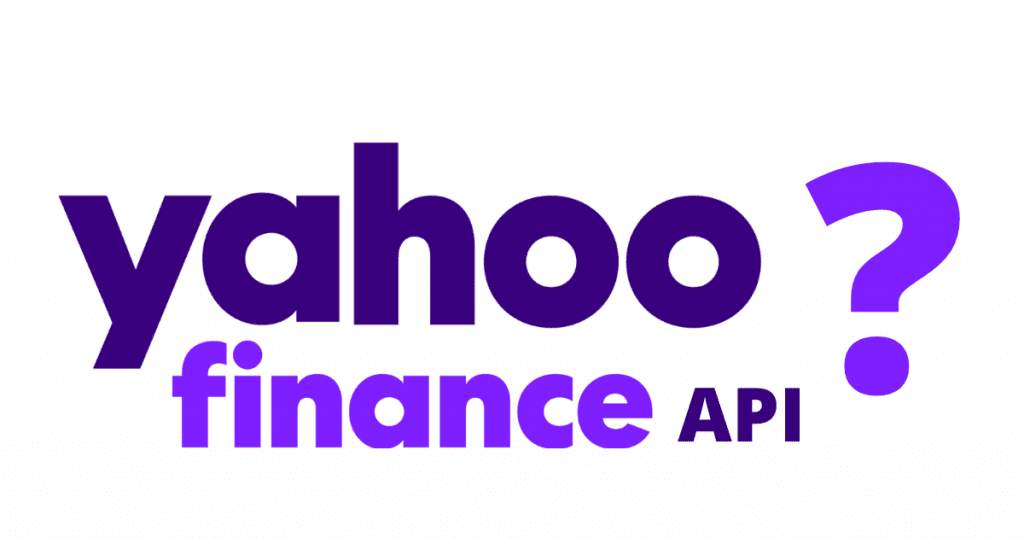
Finance Yahoo API
Step-by-Step Guide to Integrating Finance Yahoo API with Python and JavaScript-Access to real-time and historical financial data has become crucial for developers, analysts, and traders. Whether you’re building a stock tracking app, a financial dashboard, or an automated trading system, the Finance Yahoo API provides a simple yet powerful way to retrieve live market data. In this guide, we’ll explore how to integrate the Finance Yahoo API using two of the most popular programming languages: Python and JavaScript.
Introduction to Finance Yahoo API
The Finance Yahoo API allows you to access a wide variety of financial data including stock prices, historical charts, financial ratios, company profiles, and even cryptocurrency data. Although Yahoo discontinued their official API years ago, open-source libraries like yfinance for Python and third-party wrappers for JavaScript have filled the gap, making it possible to tap into Yahoo Finance’s vast data resources easily.
Whether you’re using it to fetch live prices, analyze trends, or build visual dashboards, the Finance Yahoo API offers the flexibility and functionality to bring your financial ideas to life.
Setting Up Finance Yahoo API with Python

Python is a top choice for financial data analysis thanks to its simplicity and powerful data handling libraries. To use the Finance Yahoo API in Python, the most popular method is via the yfinance package.
Start by installing it:
pip install yfinance
Once installed, you can begin pulling data immediately:
import yfinance as yf
# Choose your stock symbol
ticker = yf.Ticker("MSFT")
# Fetch current market data
info = ticker.info
print(f"Company: {info['longName']}")
print(f"Current Price: {info['regularMarketPrice']}")
This simple script gives you basic information about Microsoft’s stock. The yfinance library wraps around the Finance Yahoo API, abstracting the complexity and making it beginner-friendly.
Getting Historical Data from Finance Yahoo API in Python
Historical data is important for backtesting, trend analysis, or visualizations. You can easily retrieve and visualize past data using Python and the Finance Yahoo API.
Example:
import matplotlib.pyplot as plt
# Get one year of data
data = ticker.history(period="1y")
# Plot closing prices
data['Close'].plot(title="MSFT Closing Prices - Last 12 Months")
plt.xlabel("Date")
plt.ylabel("Price ($)")
plt.grid(True)
plt.show()
This is ideal for applications like portfolio trackers or market overview dashboards, allowing users to spot patterns over time. (Read More: Top 5 Stock Movers This Week According to Finance Yahoo USA)
Using Finance Yahoo API with JavaScript

JavaScript is widely used for creating interactive web applications. Although there is no official Yahoo Finance API for JavaScript, developers can still access financial data through APIs from services like RapidAPI, which offer Yahoo Finance data endpoints.
First, sign up for a free RapidAPI account and subscribe to the Yahoo Finance API. Then, use the following example with fetch:
const options = {
method: 'GET',
headers: {
'X-RapidAPI-Key': 'YOUR_API_KEY',
'X-RapidAPI-Host': 'yh-finance.p.rapidapi.com'
}
};
fetch('https://yh-finance.p.rapidapi.com/stock/v2/get-summary?symbol=AAPL®ion=US', options)
.then(response => response.json())
.then(response => {
const name = response.price.shortName;
const price = response.price.regularMarketPrice.raw;
console.log(`Company: ${name}, Price: $${price}`);
})
.catch(err => console.error(err));
This script fetches the latest Apple stock summary and logs the company name and current price. This method gives you a front-end solution powered by Yahoo Finance data, perfect for stock widgets or market update sections on a website. (Read More: Exploring the Best Financial Apps Reviewed by Finance Yahoo)
Displaying Data Visually with Finance Yahoo API in JavaScript
To build a visually appealing stock tracker or chart, you can combine the Finance Yahoo API with a charting library like Chart.js:
<canvas id="stockChart" width="400" height="200"></canvas>
// Assuming you have your historical data as an array of dates and prices
const labels = ["2025-01-01", "2025-02-01", "2025-03-01"]; // Sample dates
const prices = [150, 160, 158]; // Sample prices
const ctx = document.getElementById('stockChart').getContext('2d');
const stockChart = new Chart(ctx, {
type: 'line',
data: {
labels: labels,
datasets: [{
label: 'AAPL Stock Price',
data: prices,
borderColor: 'rgba(75, 192, 192, 1)',
borderWidth: 2,
fill: false
}]
},
options: {
responsive: true,
scales: {
x: {
display: true,
title: {
display: true,
text: 'Date'
}
},
y: {
display: true,
title: {
display: true,
text: 'Price ($)'
}
}
}
}
});
With this integration, you can build dynamic financial dashboards that update in real-time using the Finance Yahoo API and make the data easy to interpret at a glance. (Read More: How Investors Are Using Finance Yahoo Markets to Navigate Economic Uncertainty in 2025)
Handling Multiple Tickers with Finance Yahoo API
Both Python and JavaScript implementations of the Finance Yahoo API support multiple tickers, allowing users to track entire portfolios or sectors.
In Python:
tickers = yf.Tickers("AAPL MSFT GOOGL")
for symbol, data in tickers.tickers.items():
print(f"{symbol}: {data.info['regularMarketPrice']}")
In JavaScript, you can loop through symbols and fetch each one:
const symbols = ["AAPL", "GOOGL", "MSFT"];
symbols.forEach(symbol => {
fetch(`https://yh-finance.p.rapidapi.com/stock/v2/get-summary?symbol=${symbol}®ion=US`, options)
.then(res => res.json())
.then(data => {
const name = data.price.shortName;
const price = data.price.regularMarketPrice.raw;
console.log(`${name}: $${price}`);
});
});
This setup works great for comparison tools, investment dashboards, or building watchlists that reflect market changes.
Best Practices When Using Finance Yahoo API
To get the most out of the Finance Yahoo API, here are a few friendly tips:
- Limit API Calls: Avoid calling the API too frequently. Use caching to store recent data.
- Error Handling: Always include fallback behavior if the API fails or returns incomplete data.
- Security: Keep your API keys secure and avoid exposing them in public repositories.
- Responsiveness: Ensure your app or dashboard works well on both desktop and mobile devices.
By following these practices, your application will be both efficient and user-friendly, whether you’re building with Python or JavaScript. The Finance Yahoo API gives you the flexibility to create everything from basic apps to full-featured financial tools.




